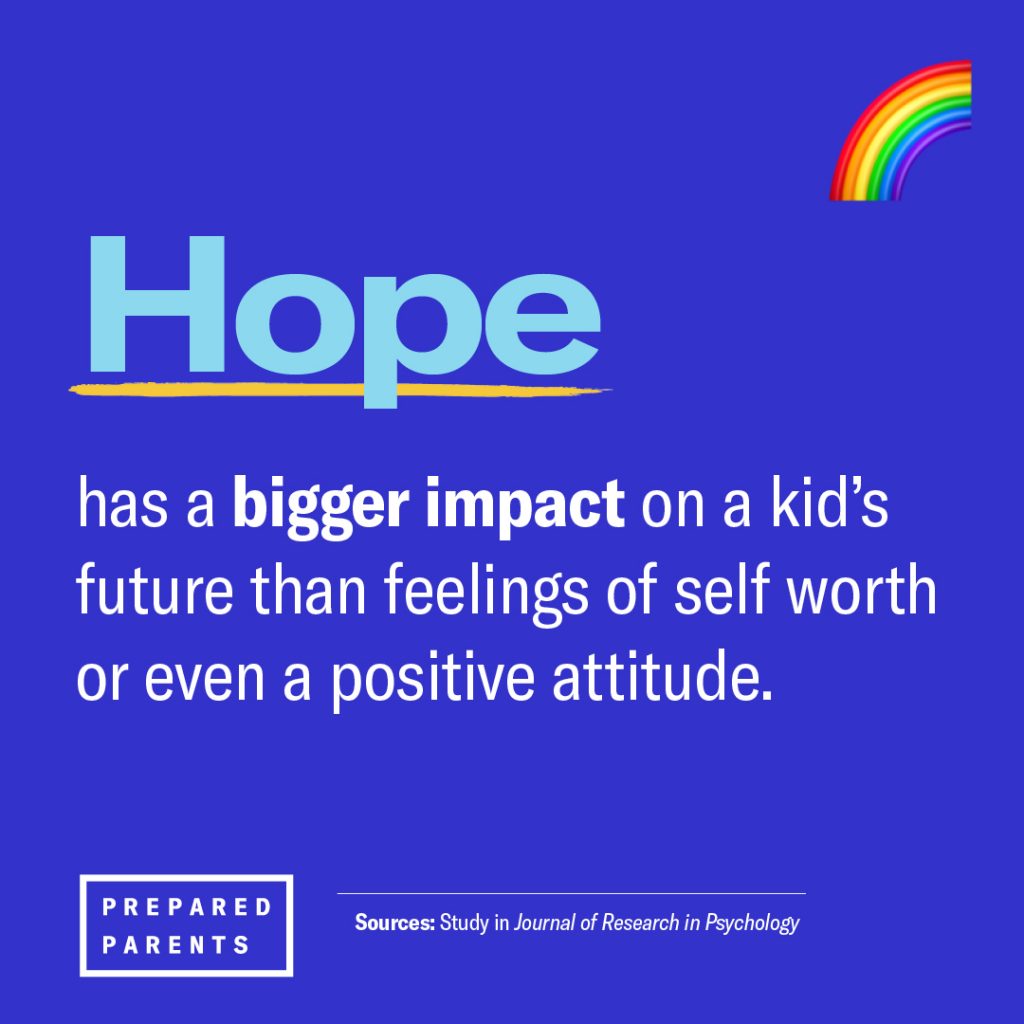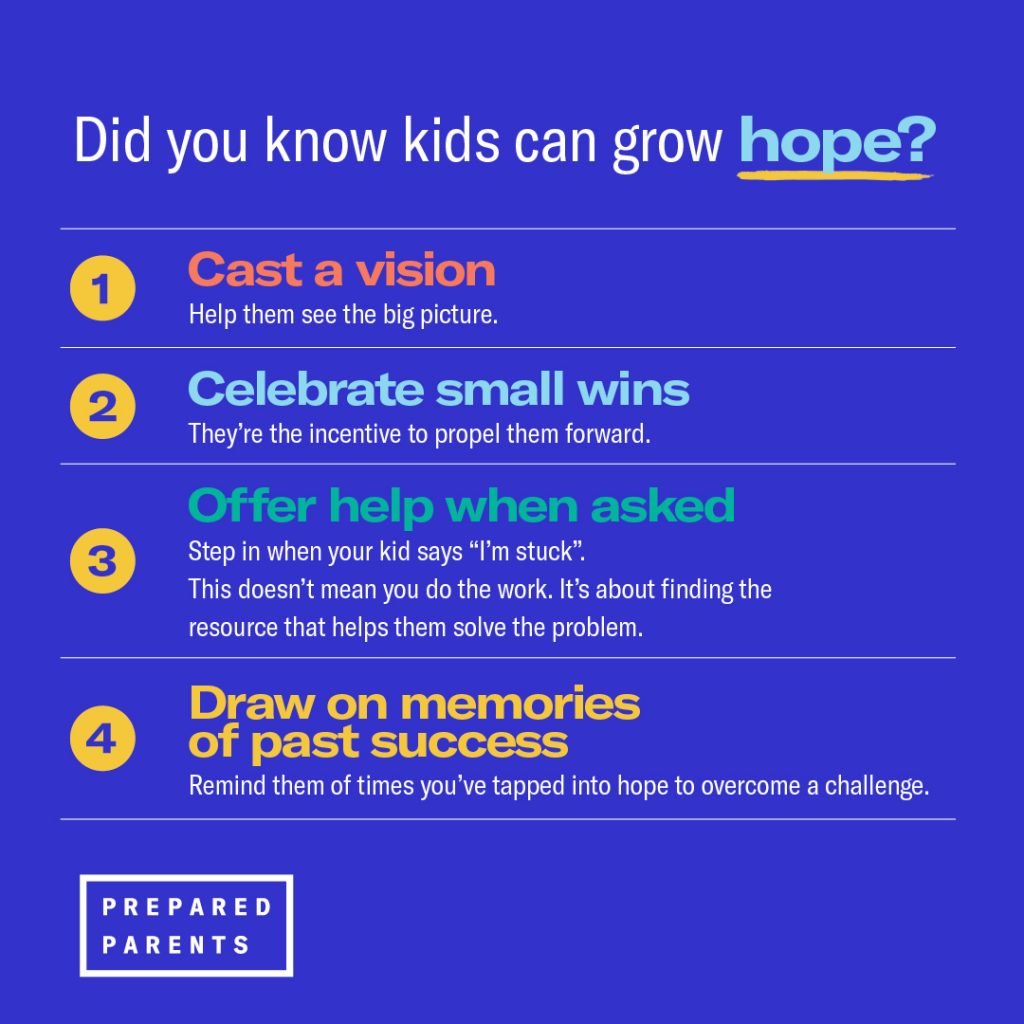Being hopeful has a greater impact on a kid’s future academic success than feelings of self-worth or a positive attitude toward life. So how can we help our kids embrace hope?

Students who are hopeful tend to be good problem-solvers and demonstrate more creativity. They have stronger friendships, exhibit lower levels of depression and anxiety, and are less likely to drop out of school. A kid who is high in hope knows how to:
- set clear and attainable goals;
- develop multiple strategies to reach those goals; and
- stay motivated to use the strategies to attain the goals, even when the going gets tough.
But a kid who feels hopeless often has trouble setting and reaching goals. They’re likely to pick easy tasks that don’t offer any challenge or opportunity for growth, and when they fail, they quit.
“Hope is the best determinant of overall well-being. It’s forward looking and optimistic. Hope is something we can learn. We generate more of it as we achieve success.”
— Chan Hellman
Ph.D, Founding Director, Hope Research Center at the University of Oklahoma-Tulsa
Neuroscientists who are studying hope have discovered that hopefulness changes the brain. In his book The Anatomy of Hope, Dr. Jerome Groopman explains that belief and expectation, the key components of hope, can block pain by releasing the brain’s endorphins and enkephalins—the body’s own version of a painkiller. He adds, “Hope, I have come to believe, is as vital to our lives as the very oxygen that we breathe.”
Hope is not a feel-good emotion. Unlike optimism, hope is not emotion at all. It’s a dynamic cognitive motivational system that takes optimism and makes it goal-oriented. Hope creates possibilities and instills in us a sense of anticipation and expectation. It revs up our internal engine to make something happen.
Hope is an incredible motivator. You might say it’s like a muscle; exercise it and it grows. Kids who use positive self-talk are more likely to stick with a task, recover from their mistakes, and complete a goal.
Here are five ways you can help:

- Assess your kid’s level of hope. You Can use the Children’s Hope Scale created by Dr. Charles R. Snyder, a psychologist who pioneered the study of hope. (See page 21 of the pdf here) The scale is used in schools to help teachers determine how to support a student’s learning.
- Cast a vision. Help kids see the big picture, so they can create a master list of goals.
- Celebrate small wins. Acknowledge your kid’s meaningful progress. It’s the incentive that will propel them forward.
- Offer help when asked. This is one of the five power behaviors of a self-directed learner. When your kid says, “I’ve tried to solve this problem myself using several different methods and I’m truly stuck,” then it’s okay to step in. This doesn’t mean you do the work. It’s about finding the resource that helps them solve the problem.
- Draw on their memories—and yours—of past success by telling stories. Remind them of those times you tapped into hope to overcome a challenge. Talk about others who have used hope to motivate them like refugees and people who have overcome illness or disability.
Being hopeful is not just about looking on the bright side; it pushes a kid to do something.
The Prepared Parents’ project Many Hands Make Light Work teaches kids how to apply their hope to a cause or concern by crafting a persuasive argument that will inspire action. Curriculum designer and ThinkCERCA founder, Eileen Murphy Buckley, says, “The driver of Many Hands Make Light Work is: how do we unleash a kid’s optimism and potential? Kids are craving the opportunity to act right now. Here’s an opportunity to empower them to do some really great things. ”

